Men's suits in the 1920s represent a pivotal shift toward refined elegance and modernity. You'd find tailored, slim-fit suits crafted from luxurious fabrics like tweed and herringbone, often featuring bold patterns such as stripes and plaid. The three-piece suit—complete with a tailored jacket, waistcoat, and trousers—offered a sophisticated look perfect for both casual and formal events. Accessories like fedoras and self-tie bow ties elevated the style, while color coordination guaranteed visual harmony. This decade's fashion laid the groundwork for today's menswear, revealing just how timeless these trends can be. There's much more to explore about this stylish era.
Overview of 1920s Men's Fashion
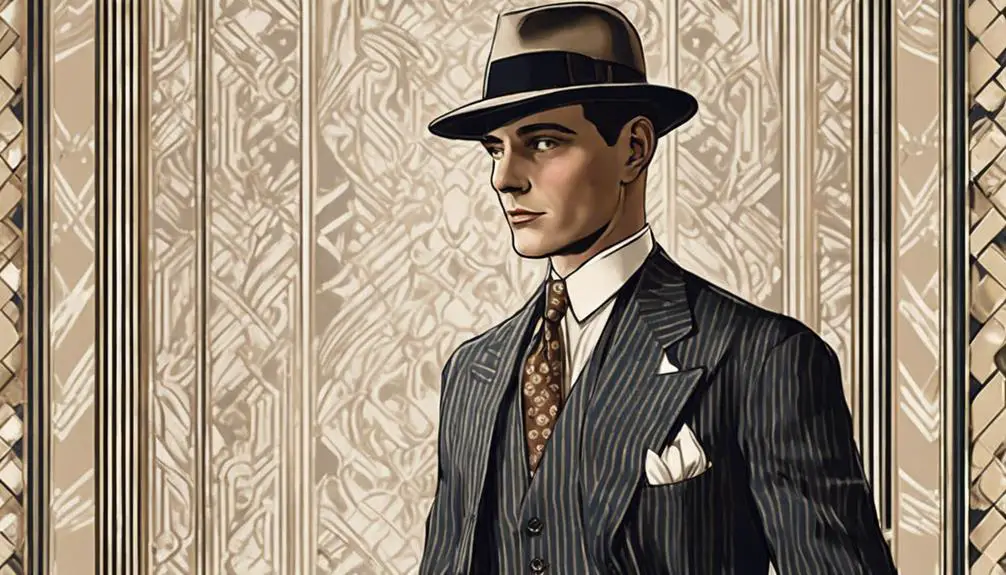
The 1920s ushered in a radical shift in men's fashion, shaking off the constraints of the previous decades and embracing a more refined elegance. This era, known as the Roaring Twenties, marked a change toward stylish suits characterized by tailored fits and luxurious fabrics. Influential figures like Jay Gatsby and the Duke of Windsor set the standard, inspiring men to adopt vintage suits that exuded sophistication.
Navy suits became a staple for formal occasions, while morning suits provided a sharp look for graduations and weddings. The versatility of check shirts allowed men to adapt their outfits for various settings, reflecting the dynamic social landscape. Accessories played an essential role in achieving the quintessential 1920s mens fashion, with fedoras, bow ties, and suspenders elevating looks to new heights. Shoes, such as loafers and two-tone varieties, complemented these ensembles, providing both style and comfort.
As the decade progressed, the fashion narrative evolved from slim Jazz Age suits to the broader Oxford Bags, with colors like grey, brown, and blue dominating wardrobes. Bold patterns, including stripes and plaid, further showcased the creativity of the era, capturing the essence of the Roaring Twenties in every stitch.
Key Suit Styles and Patterns
During the 1920s, men's suit styles evolved dramatically, reflecting the decade's vibrant social shifts and cultural dynamism. One of the most notable trends was the slim fit, which offered a sleek silhouette, ideal for the modern man of the time. The three-piece suit became a staple, comprising a tailored jacket, trousers, and a waistcoat, emphasizing sophistication for formal occasions.
Fabrics like tweed and herringbone gained popularity, adding texture and depth to these vintage ensembles. Bold patterns, including stripes and plaid, adorned suits, showcasing the era's elegance and flair. Common colors leaned toward muted tones such as grey, brown, and blue, while summer suits embraced lighter fabrics like striped seersucker and ivory linen.
As the decade progressed, styles began to evolve, with the late 1920s introducing wider Oxford Bags, which contrasted the classic vintage look of earlier suits while still maintaining an air of refinement. Peak lapels became a defining feature, enhancing the overall aesthetic. Overall, the key suit styles and patterns of the 1920s encapsulated a transformative period in men's fashion, merging tradition with modernity beautifully.
Essential Components of a Suit
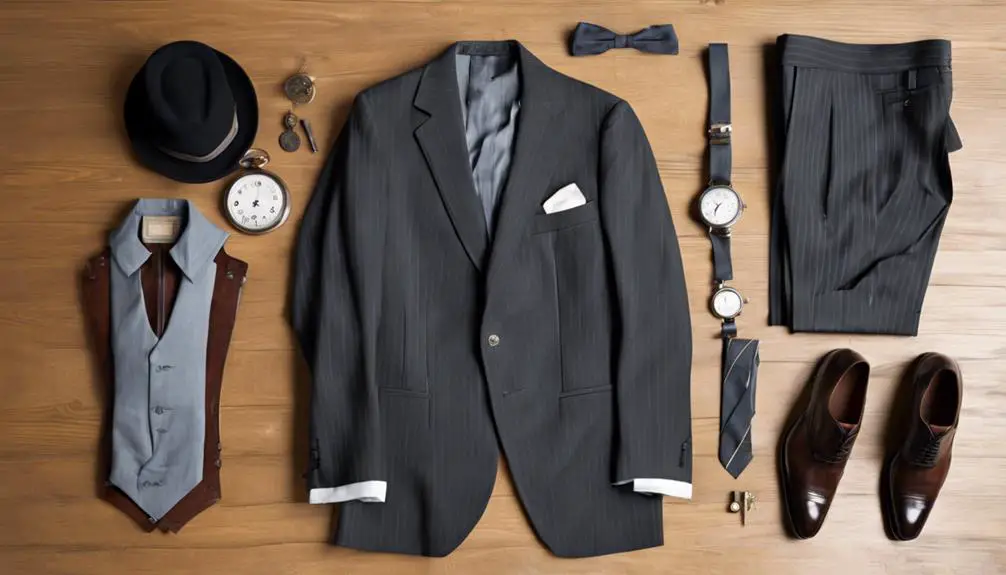
A well-crafted suit hinges on three essential components: the jacket, trousers, and waistcoat, each meticulously tailored for a polished appearance. In the 1920s, these elements formed the backbone of the classic three-piece suit, exuding a tailored fit that accentuated the wearer's physique. Vintage clothing from this era often featured unique labels that indicate craftsmanship and authenticity, showcasing a level of detail that is highly sought after by collectors vintage clothing labels.
The jacket, often cut with a structured silhouette, served as the focal point, showcasing vintage fabrics and refined details. Trousers, typically high-waisted and slightly tapered, complemented the jacket while guaranteeing comfort and style. The waistcoat added an extra layer of sophistication, frequently featuring bold patterns or solid colors that enhanced the overall ensemble.
When considering the essential components of a suit, think about these key features:
- Tailored Fit: Guarantees a sharp, flattering look that elevates your style.
- Vintage Aesthetics: Captures the essence of the 1920s, making a statement about elegance and class.
- Color Coordination: Harmonizes the ensemble, particularly with ties and shirts that bring personality to the outfit.
Together, these components create a cohesive look, reflecting the era's fashion sensibilities while allowing personal style to shine through.
Iconic Accessories for Men
When stepping into the world of 1920s men's fashion, iconic accessories play a pivotal role in defining a polished and sophisticated look. Fedoras, with their sleek lines and soft felt, were essential for completing outfits, especially among stylish gentlemen and gangsters alike. These hats not only provided shade but also added an air of mystery and allure.
Leather gloves were another staple, enhancing the elegance of formal attire and offering warmth during cooler months. They served as a marker of refinement, aligning perfectly with the vintage 1920s mens fashion ethos. Pocket squares, typically in lighter tones, became a must-have accessory to introduce a pop of color to darker suits, showcasing your attention to detail.
As for trousers, clip-on braces emerged as a practical alternative to belts, keeping trousers neatly in place while adhering to the era's slim fit aesthetic. Ultimately, self-tie bow ties brought a classic sophistication to formal events, reinforcing the emphasis on polished appearances. Together, these accessories not only complemented the suits they wore but also reflected a broader cultural shift towards individuality and style in men's fashion during the 1920s.
Popular Suit Examples
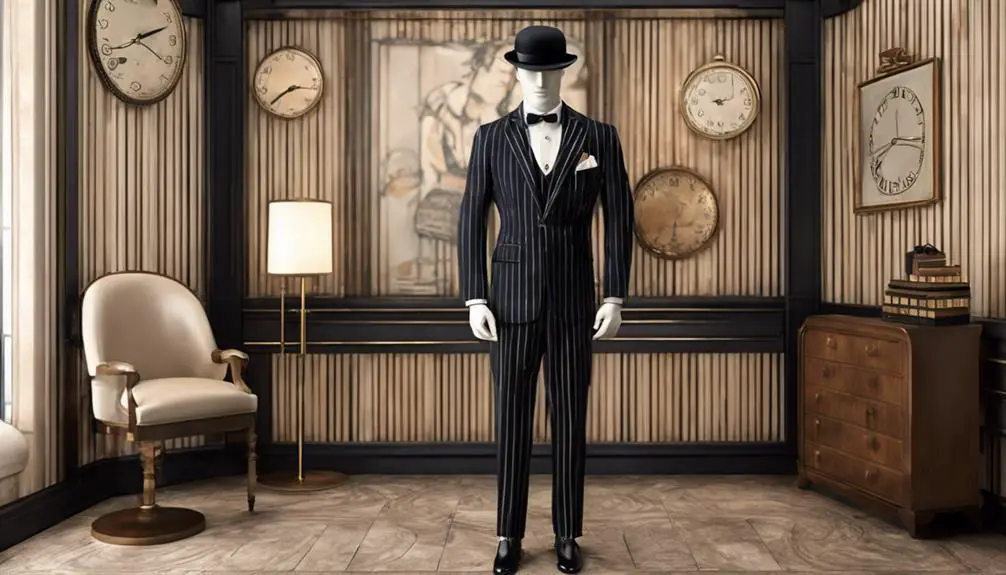
Exploring popular suit examples from the 1920s reveals a rich tapestry of styles that continue to influence modern menswear. The era's suits were characterized by their impeccable fit and innovative designs, each with its distinctive flair.
Here are some notable examples:
- VINCI Mens Wool Feel 6 Button Double Breasted Gangster Stripe Suit: This suit captures the essence of gangster fashion with its bold stripes and commanding silhouette, perfect for making a statement.
- YZHEN Mens 3 Piece Tailcoat Tuxedo: Tailored for formal occasions, this tuxedo embodies the elegance of 1920s party wear, ideal for weddings and upscale events.
- Cavani Shelby – Mens Navy Blue 3 Piece Herringbone Check Suit: Combining a vintage herringbone pattern with a modern fit, this suit appeals to contemporary fashion enthusiasts while retaining its retro charm.
The versatility of these suits—ranging from the casual linen beige styles for summer events to the sophisticated pinstripe options—demonstrates the era's focus on tailoring and design, ensuring that the influence of 1920s suits remains relevant today. Whether you're dressing for a wedding or a casual gathering, there's a vintage-inspired suit to suit every occasion.
Shopping Tips and Advice
Steering through the world of 1920s men's suits requires an eye for detail and a clear understanding of what defines the era's distinctive style. When shopping, prioritize a Vintage Tailored Fit that mirrors the slim silhouette typical of this period. High-quality fabrics like wool blends and cotton not only enhance durability but also align with the vintage aesthetic. Look for colors such as grey, brown, and navy, and never overlook key features like peak lapels, checkered patterns, and Three Piece Blue suits.
Here's a quick guide to elevate your shopping experience:
| Feature | Description |
|---|---|
| Fit | Vintage Tailored Fit |
| Fabric | High-quality wool blends |
| Color | Classic shades: grey, brown, navy |
| Design | Essential elements: peak lapels, checks |
| Accessories | Silk bow ties, fedoras, two-tone shoes |
Don't forget to take advantage of seasonal discounts, which can offer markdowns of up to 37%, making these stylish mens suits more affordable. Completing your look with the right accessories can truly elevate your ensemble and embrace the essence of the 1920s.
Maintaining Vintage Suits
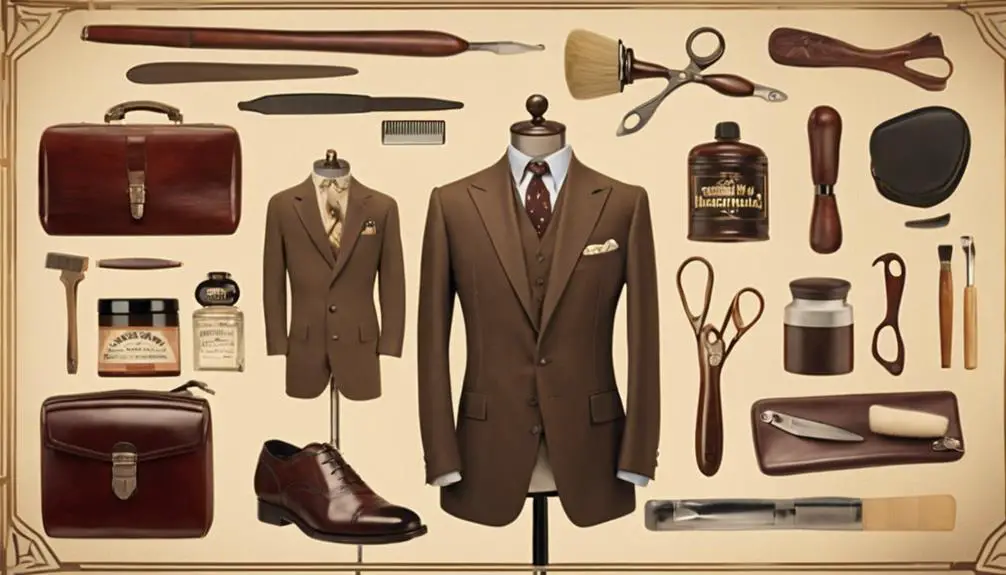
Maintaining the integrity of vintage suits is as important as selecting the right one. To guarantee your suits remain in pristine condition, you need to adopt a few key practices. Regular dry cleaning is essential for preserving fabric quality and appearance over time, while understanding the history of your suit's vintage clothing labels can provide insights into its provenance and value. Proper storage also plays a significant role; store your suits in a cool, dry place and utilize garment bags to protect them from dust and wear.
Here are some important tips to keep in mind:
- Immediate attention to stains: Promptly treating any stains can prevent lasting marks that might ruin the suit's appearance.
- Avoid excessive folding: Folding can distort the suit's shape and structure, so hang them whenever possible to maintain their form.
- Follow care instructions: Each fabric has specific care requirements, and adhering to these guarantees longevity and preservation.
Frequently Asked Questions
What Kind of Suits Were Worn in the 1920s?
In the 1920s, you'd notice streamlined suits emphasizing tailored designs, often featuring distinct patterns. Three-piece suits became your go-to for sophistication, complemented by muted colors and stylish accessories that reflected the decade's elegance and cultural shifts.
What Did Men Typically Wear in the 1920s?
In the 1920s, you'd typically wear tailored clothing that emphasized elegance. You'd favor well-fitted trousers, stylish shirts, and accessories like fedoras, reflecting a sophisticated look that showcased a desire for refinement and social status.
How to Dress a 1920S Male?
To dress like a 1920s male, choose a fitted three-piece suit, add a light pocket square, and leave the last jacket button undone. Complete your look with accessories like a fedora and silk bow tie.
What Did Men Look Like in the 1920s?
In the 1920s, you'd notice men sporting sleek, tailored outfits, often showcasing vibrant patterns and colors. Accessories like fedoras and bow ties added flair, while shoes and vests completed a polished, sophisticated appearance.
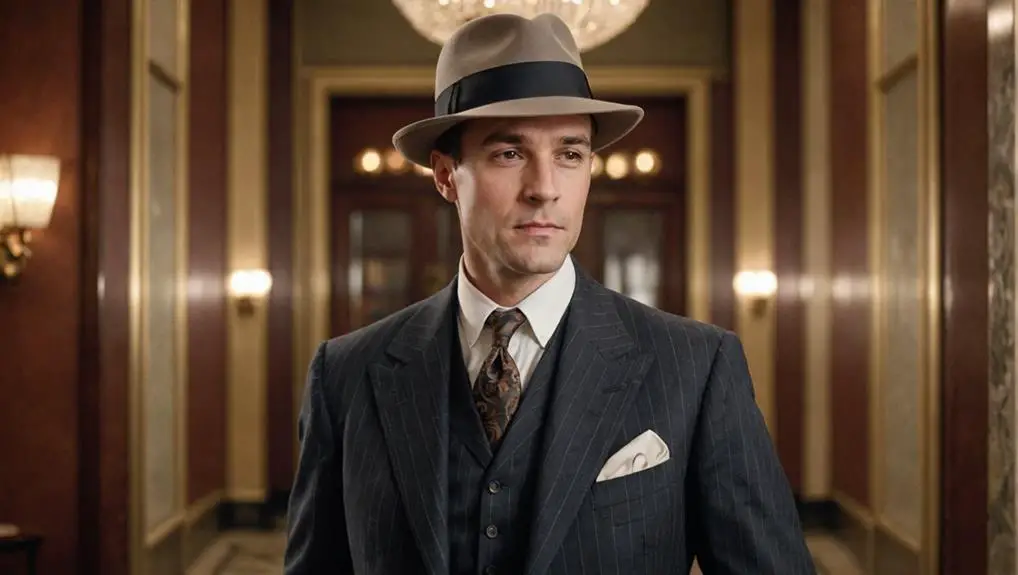

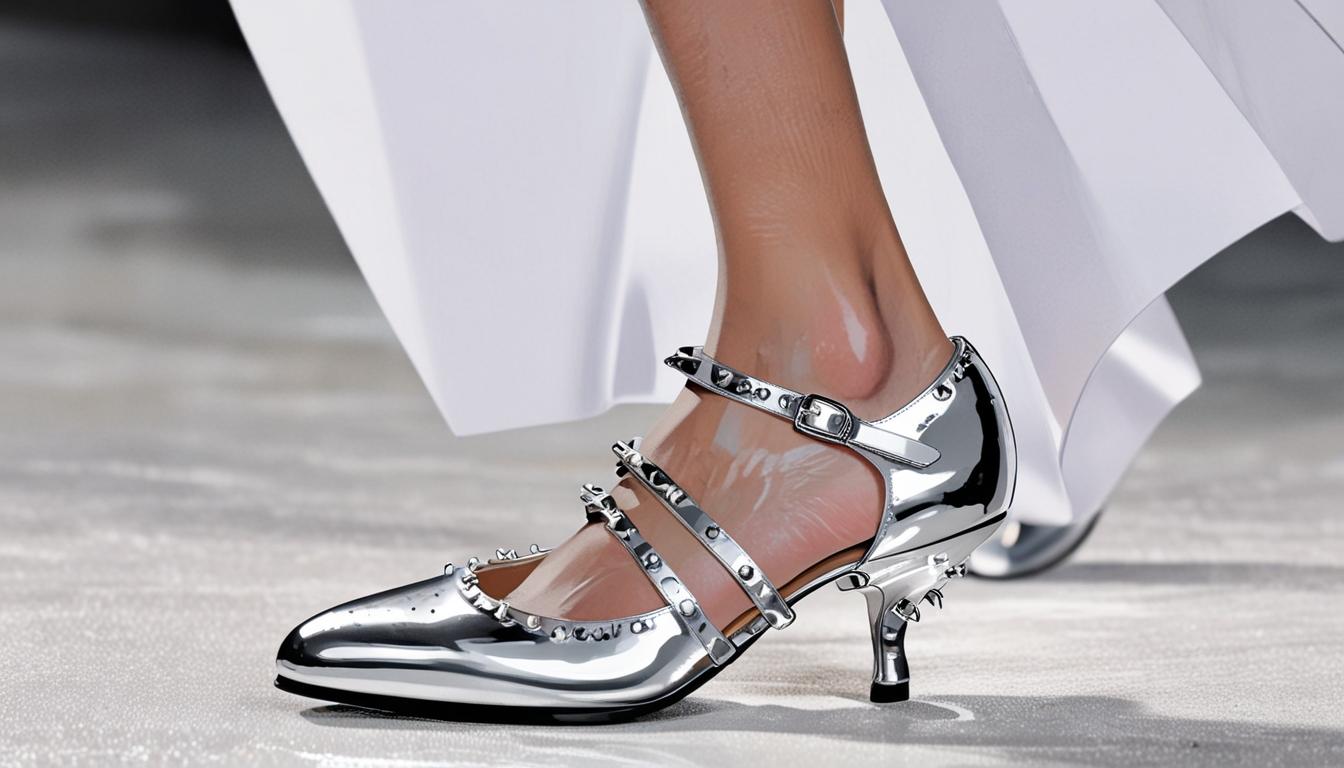


This post presents clear idea in favor of the new viewers of
blogging, that truly how to do blogging.